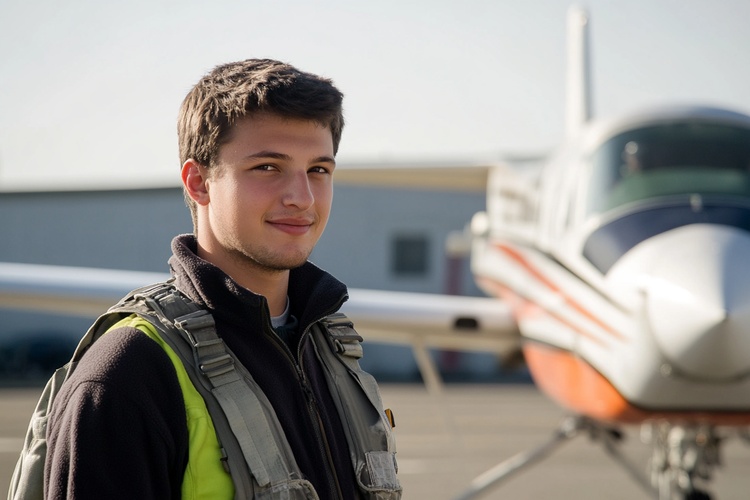Start Aviation Training in the US Today
Dreaming of taking to the skies? The United States offers one of the most comprehensive aviation training systems in the world, with FAA-certified schools, expert instructors, and advanced technology. Whether you're aiming for a private pilot license or a commercial career, starting your aviation training in the U.S. gives you international credibility, access to diverse flight environments, and a clear pathway to professional certification. This article will guide you through everything you need to know to get started — from school selection to visa requirements and financial planning.

How do I choose the right FAA-approved flight school in the US?
Selecting the right flight school is crucial for your aviation journey. The Federal Aviation Administration (FAA) approves two types of flight schools: Part 61 and Part 141. Part 61 schools offer more flexibility in training schedules, while Part 141 schools follow a structured curriculum that may allow for faster completion of training hours. When choosing a school, consider factors such as location, fleet quality, instructor experience, and student-to-instructor ratio. Research schools thoroughly, read reviews from current and former students, and if possible, visit the facilities in person. Look for schools that offer modern aircraft, advanced simulators, and comprehensive ground training programs.
What are the different pilot licenses and training stages?
Understanding the various pilot licenses and training stages is essential for planning your aviation career. The most common progression for aspiring pilots includes:
-
Student Pilot Certificate: This is your starting point, allowing you to train under the supervision of a certified flight instructor.
-
Private Pilot License (PPL): This license enables you to fly single-engine aircraft for non-commercial purposes.
-
Instrument Rating: An add-on to your PPL, allowing you to fly in conditions with reduced visibility.
-
Commercial Pilot License (CPL): This license permits you to fly for compensation or hire.
-
Multi-Engine Rating: An additional qualification to fly multi-engine aircraft.
-
Airline Transport Pilot License (ATPL): The highest level of aircraft pilot certificate, required for captains of large commercial airlines.
Each stage involves both ground school and flight training, with specific hour requirements and written and practical exams.
What visa options are available for international aviation students?
International students have several visa options for pursuing aviation training in the US. The most common are:
-
M-1 Visa: For students attending vocational or technical schools, including many flight schools.
-
F-1 Visa: For students enrolled in academic programs at colleges or universities that offer aviation degrees.
-
B-1/B-2 Visa: For short-term training courses lasting less than 30 days.
To apply for these visas, you’ll need acceptance from an FAA-approved flight school or aviation program, proof of financial support, and other required documentation. It’s essential to consult with the school’s international student office and the US embassy in your home country for the most up-to-date visa requirements and application processes.
What is the typical timeline and cost of flight training programs?
The timeline for completing flight training varies depending on the intensity of your program and your personal progress. On average:
-
Private Pilot License: 3-6 months
-
Instrument Rating: 2-3 months
-
Commercial Pilot License: 4-8 months
-
Multi-Engine Rating: 1-2 weeks
-
Airline Transport Pilot License: 1-2 years (including required flight hours)
Costs can vary significantly based on location, type of aircraft used, and program structure. Here’s a general breakdown of estimated costs for major training milestones:
| Training Stage | Estimated Cost Range |
|---|---|
| Private Pilot License | $10,000 - $15,000 |
| Instrument Rating | $8,000 - $12,000 |
| Commercial Pilot License | $20,000 - $30,000 |
| Multi-Engine Rating | $3,000 - $5,000 |
| Airline Transport Pilot License | $50,000 - $80,000 |
Prices, rates, or cost estimates mentioned in this article are based on the latest available information but may change over time. Independent research is advised before making financial decisions.
These costs typically include flight time, ground instruction, study materials, and exam fees. Additional expenses may include living costs, medical examinations, and insurance.
How does US training prepare you for a global aviation career?
Training in the US prepares pilots for global careers in several ways:
-
International Recognition: FAA certifications are widely respected and often easily convertible to other countries’ licenses.
-
English Proficiency: As aviation’s global language, mastering English during US training is invaluable.
-
Advanced Technology: US flight schools often use the latest aviation technology, preparing pilots for modern cockpits worldwide.
-
Diverse Flying Conditions: The US offers varied terrain and weather conditions, providing comprehensive real-world experience.
-
Networking Opportunities: Many international airlines recruit from US flight schools, offering global career prospects.
-
Safety Culture: US aviation’s strong emphasis on safety procedures is highly valued in the global industry.
Starting your aviation training in the United States opens doors to a world of opportunities. With its comprehensive programs, cutting-edge facilities, and globally recognized certifications, US flight training provides a solid foundation for a successful career in aviation. Whether you aspire to fly for major airlines, become a private pilot, or explore other aviation-related fields, the skills and knowledge gained through US-based training will serve you well in the skies above any part of the world.




